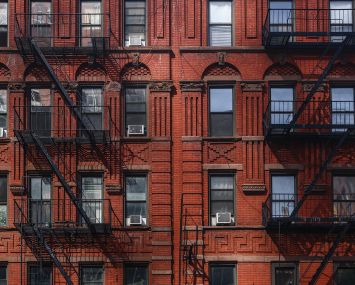Last week, this column contained an overview of the New York City investment sales market’s 2015 performance and some of the issues we will be watching in 2016. In this analysis, we determined that in totality, 2015 was a tremendous year. But if we disaggregate the data into a quarterly analysis, we see that the market’s performance began to degrade on a quarter-over-quarter basis.
We also observed that disparate product types were performing at different levels and in different ways. Development sites and hotels were facing headwinds. Office and multifamily properties were still doing very well from a value perspective and retail properties have been somewhere in the middle. Similar to the differences we have seen in the way product types have performed, the different geographic submarkets within the city have performed in their own way, as well.
This week, we will take a look at each of these submarkets and how investment sales activity has been in each of them. Prior to doing that, we should take a minute to review market-wide activity from 2015.
The 2015 New York City investment sales market was one for the record books. The dollar volume of sales achieved a new all-time record, while the number of assets sold came close but could not quite top last year, in which a new all-time record was established. (Investment sales reached a staggering $74.5 billion.) Values also achieved new all-time highs, but began to show signs of softness as the year came to a close. While there is uncertainty creeping into the market, there is no arguing that last year was a fantastic year for investment sales.
With regard to the number of properties sold, in 2014, an all-time record of 5,533 properties traded hands in New York City. In 2015, the number dipped 8 percent to 5,083 properties sold, but is still the second best total we have ever recorded. Property values also hit what we expect to be cyclical peaks. The average price per square foot of a property sold citywide in 2015 climbed to $549, a new record. Capitalization rates were also what are likely to be cyclical lows, hitting a citywide average of 4.8 percent. While these averages were impressive for the entire year, the quarter-by-quarter analysis shows price-per-square-foot falling and cap rates rising.
With regard to dollar volume, the two best performing submarkets in 2015 were Brooklyn and Manhattan. In Brooklyn, there was $8.85 billion in sales, a new all-time record, surpassing the prior record set in 2014 by 31.1 percent. In Manhattan, there was $57.7 billion in sales, also establishing a new all-time record. This total was 36.6 percent higher than the $42.1 billion of sales in 2014 and 10.5 percent above the prior record of $52.5 billion established in 2007. Modest increases of 6.4 percent and 6.7 percent in dollar volume were seen in Queens and the Bronx, respectively. In each of those cases, the $3.99 billion seen in Queens and the $2.4 billion in the Bronx established new all-time records in those submarkets. The weakest performing submarket was by far Northern Manhattan. After two years when Northern Manhattan was the most robust of all submarkets, on a relative basis, with respect to sales activity, the submarket took its lumps in 2015. There was just $2.1 billion in sales last year, down 31.5 percent from the $3.1 billion seen in 2014.
With regard to market activity, we have always looked at the number of properties sold as being far more indicative of the health of the market, rather than dollar volume (which can be skewed significantly by very large transactions).
With regard to this metric, Manhattan and the Bronx were the two submarkets that saw an increase in the number of properties sold in 2015 versus 2014 totals. In 2015, there were 1,060 properties sold in Manhattan, a 4.2 percent increase over the 1,017 sold in 2014.
In the Bronx, the percentage increase was larger, at 7 percent, as 671 properties traded hands last year as opposed to the 627 that sold in 2014. In Brooklyn, 2,030 properties sold, a 6.5 percent decrease from 2014. In Queens and Northern Manhattan, the decreases were much more acute. In Queens, 969 properties were sold representing a 21.5 percent drop from 2014. In Northern Manhattan, the decrease was 26.9 percent, with only 353 properties selling in the entire year.
As 2016 unfolds it is likely that we continue to see the distinct product types and geographic submarkets perform differently. We anticipate decreases in both dollar volume and number of properties sold this year with reductions in property values. It will certainly be interesting to see what will happen in what we expect to be a transitional year.


